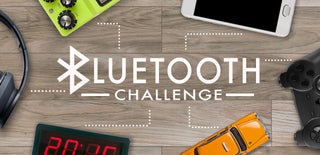Introduction: Power Lunch
Background
A typical household consumes more electricity for heating and cooling purposes than any other single use and the refrigerator is often the most power hungry appliance of all. According to the second law of thermodynamics, for all of the heat removed from the interior of the fridge to keep its contents cool, a greater amount is added outside where it's released and distributed throughout the room. It's not difficult to imagine a better use for this heat in a household that features such appliances as ovens, cloths dryers, and water heaters. The challenges come from transferring heat between locations and customers not yet ready for large, expensive, multipurpose appliances.
Our team decided to address this challenge on a smaller scale by placing a thermoelectric cooling plate inside of a lunch box or cooler to simultaneously heat and cool the contents. Further, since a user generally doesn't care about the temperature of the food until they are about to consume it, the timing of the heating and cooling can be controlled and adjusted to so that it is only active when needed.
Description
The Power Lunch lunchbox is a mobile connected insulated food container, such as a lunchbox or cooler, with the interior divided into two sections by a thermoelectric cooling module such that when powered, one side of the container is heated while the other is cooled. The container connects to a mobile app through Bluetooth allowing the user to manage the container's power consumption and timing of the heating and cooling so that its contents reach the ideal temperatures immediately before consumption.
The Thermoelectric effect
The thermoelectric effect is the direct conversion of temperature differences to electric voltage and vice versa. A thermoelectric device creates voltage when there is a different temperature on each side. Conversely, when a voltage is applied to it, it creates a temperature difference.
The thermoelectric devices used in our project are Peltier plates. The Peltier effect is the presence of heating or cooling at an electrified junction of two different conductors, when a current is made to flow through a junction between two conductors, heat may be generated or removed at the junction.
Step 1: Assemble Thermoelectric Module
Thermoelectric Module
The thermoelectric heating and cooling module is assembled using by first placing a conductive copper sheet into a 3D printed holder. Next, two Peltier plates coated with thermal paste and with leads connected in series are pressed flat against the plate. The exposed surfaces of the plates are also coated with thermal paste and heat sinks are the pressed flat against them. Finally, a second copper sheet is pressed against the heat sinks and held in place by the printed holder.
Step 2: Assemble Control Circuit
Control Circuit
The control circuit consists of an Intel powered Arduino 101 control board with a base shield connected to two temperature sensors and a relay. To ensure the mobile app functions connect to the proper components as expected, place the base shield on the Arduino 101 board and connect the temperature sensors to A0 and A1 and the relay to D4. Connect the relay to the thermoelectric module by cutting one of it's power leads and inserting each cut end into the relay so that it is disconnected when the relay is off.
Step 3: Construct Component Housing
Component Housing
The electronics housing can be 3D printed using the attached file. Assemble the themoelectric module as described in the previous steps and run wiring though to bottom of the holder and into the electronics box. Place the control circuit and batteries into the electronics box. Pass the temperature sensors through the openings on the top and attached one to each side of the thermoelectric module. 3D print a lid to hold the electronics in place.
Attachments
Step 4: Program Control Board and Connect Mobile App
Arduino Program
The Arduino 101 board is programmed to run a bluetooth low energy service, transmit two temperature characteristics, and listen for a digital output characteristic. The service and characteristic IDs are used in the Power Lunch mobile app to identify and communicate with the lunchbox.
Android Mobile App
The Power Lunch Android app uses the Android Bluetooth Low Energy API to query all nearby bluetooth devices by name and connect if the name matches that of the lunchbox. Once a connection is established, the app queries available services and the characteristics by ID to find those the match the temperature readings of the two sensors. The temperatures are read and lunchbox preview is updated so the color intensity of each compartment reflects the measured temperature. The lunchbox can be activated or deactivated by querying and then writing to the control boards activation service.

Runner Up in the
Bluetooth Challenge

Participated in the
Box Contest 2017












